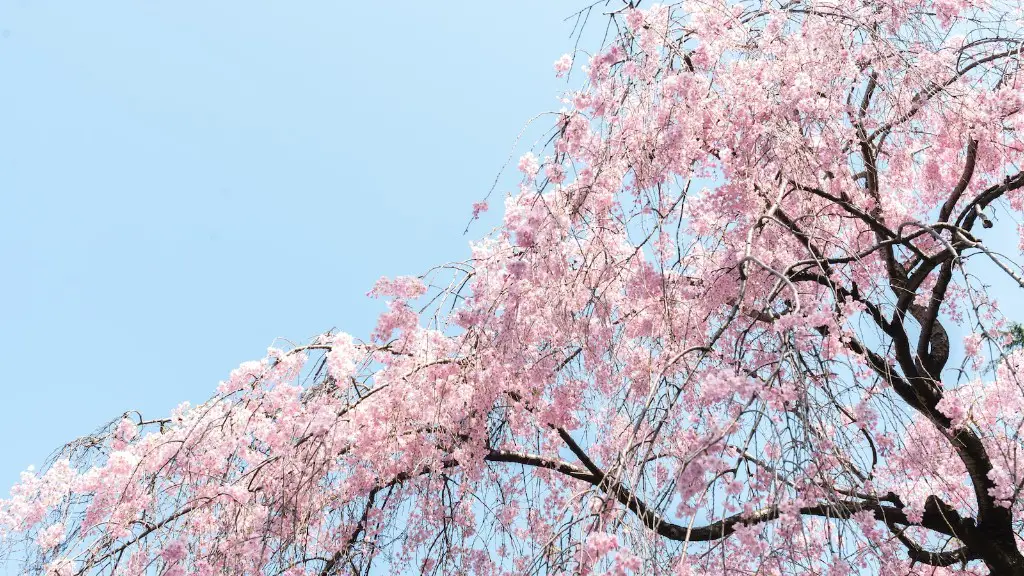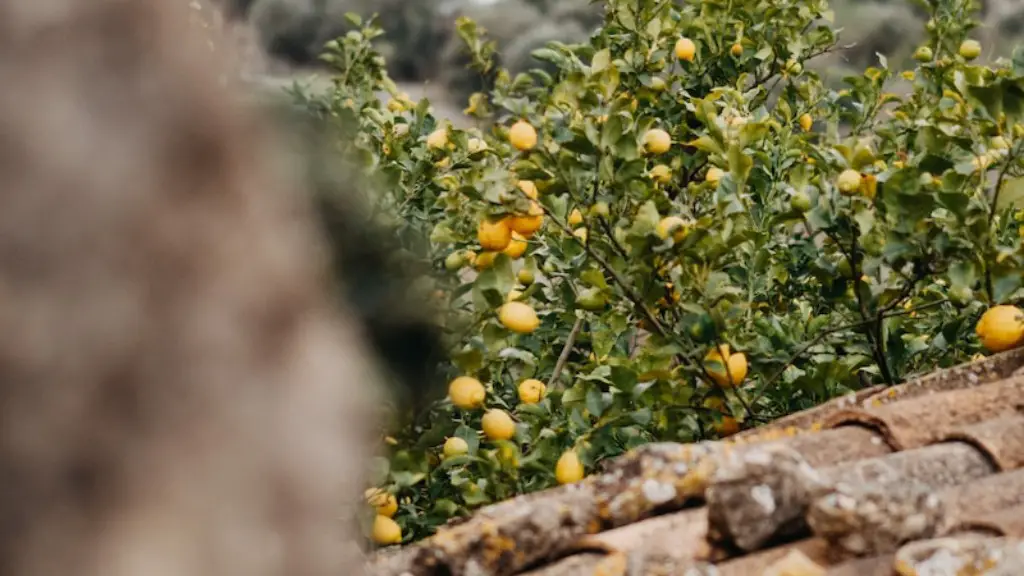Cherry trees are a delightful addition to any garden and it can be disheartening when they are not producing fruit. There are several potential causes of this, and it is a good idea to research as much as possible to identify the cause and take appropriate action to rectify the situation. Some of the most common reasons a cherry tree is not producing fruit include lack of pollination, nutrient deficiencies, excessive pruning, or incorrect planting depth.
When it comes to lack of pollination, experts say it can be a problem when there aren’t many bees or other pollinators around. Honeybees are instrumental in getting cherry trees to produce fruits. To encourage their presence, one should extend flowering plants to attract them, as well as minimize the use of pesticides. Additionally, if there isn’t a bee hive nearby, it may be necessary to hand pollinate the tree by transporting pollen from stamen to the stigma with a brush.
Poor soil quality and nutrient deficiencies can also cause cherry trees to not produce fruit. It is important to ensure the soil surrounding the tree is rich in organic matter and has adequate nitrogen. Fertilizing correctly can greatly reduce nutrient deficiencies, and an application of balanced fertilizer will help provide the necessary nutrients to ensure good fruit production. Finally, if the tree is planted too deep, or if there has been excessive pruning, this can also limit fruit production.
Temperature Requirements
Cherry fruit producers need to pay attention to temperatures during the blossoming and fruit set stages. Chilling and heat requirements can also cause cherry trees not to produce fruit. The required chilling or chilling hours for cherries generally range from 500 to 1000 hours. Without sufficient chilling hours, cherries are reluctant to break dormancy and flower, meaning no fruit is produced. The critical temperature for cherry blossom is 7-10 degrees Celsius.
Additionally, relatively high temperatures during the fertilization and fruiting phases are necessary for the successful and healthy growth of cherry fruits. To compensate for a lack of either cold or hot temperatures, some varieties have short chill and sensitive to heat requirements. Short chill varieties mean that in comparison with regular cherries, fewer chill hours are necessary for them to break dormancy.
Water Requirements
Cherry trees need a lot of water, especially during the fruit development stage. They should be irrigated even during the flowering process, to improve the water balance inside the tree so that it can produce more fruits. The frequency, timing and amount of irrigation depend on the soil type, variety of cherry and the climate. In drier climates, the trees may need an average of 1-2 inches of water each week.
Experts suggest avoiding overhead watering, as this can cause plant disease, fungi, and other issues. The aim of irrigation should be to maintain a consistent soil moisture in the tree’s root zone. An effective way to achieve this is to water the trees deeply, so that the water reaches a depth of at least 18 inches. Additionally, it is important to ensure that the amount of rainfall is adequate – a total of 6-7 inches of rain during the period of growth is recommended.
Pruning and Staking
The right pruning techniques can greatly influence the quantity and quality of the fruit production. Generally, pruning of young trees should be done in a way that it encourages good plant structure, while older trees can be shaped to maintain balance and shape. The best time to prune cherry trees is during the late winter, when the tree only has a few leaves, making it easier to work with. Prune only the necessary parts, as excessive pruning can damage the tree.
Staking of cherry trees is important to ensure the tree’s structure is not weakened by heavy fruit and storms. It can also be useful to support a tree if the soil quality is poor. Staking should be done when the tree is planted, or shortly thereafter. It is recommended that the stake is at least 3 feet tall and is firmly in the ground. The tree should be secured with a V-shaped label, not tied, to allow for trunk movement.
Fungal and Insect Pests
Fungal and insect pests can also cause a cherry tree to not produce fruit. Fungal disease and pests can affect the quality of the crop and can even lead to the death of the tree. Thus, it is important to know the kind of environment that the cherry tree inhabits. Common problems include black knot, peach leaf curl, brown rot, and bacterial spot. When it comes to insect pests, cherry fruit fly and plum curculio are among the more common ones.
Taking preventive measures is the key when it comes to these pests, as the cost of treating a mature tree when affected can be quite high. Horticultural oil and insecticides can help if there are only a few pests, or if the infestation is light. If there are too many pests, one should consult with a professional, as it may be necessary to use a more concentrated pesticide.
Weather Conditions
The weather conditions during the flowering and fruiting season can also have an impact on a cherry tree’s ability to produce fruit. Excessive rain can cause the flowers to wilt and can also lead to diseases. Also, excessive heat can reduce bee activity, which affects pollination. Thus, it is important to pay close attention to the weather during these periods and take appropriate measures to protect the tree if necessary.
Finally, cold temperatures during the flowering or fruiting season can also reduce the number of fruits produced. So it is important to choose varieties that are suitable for the climate and to use preventing measures, such as using fabric to protect the trees from extreme temperatures.



